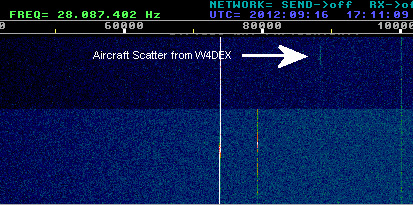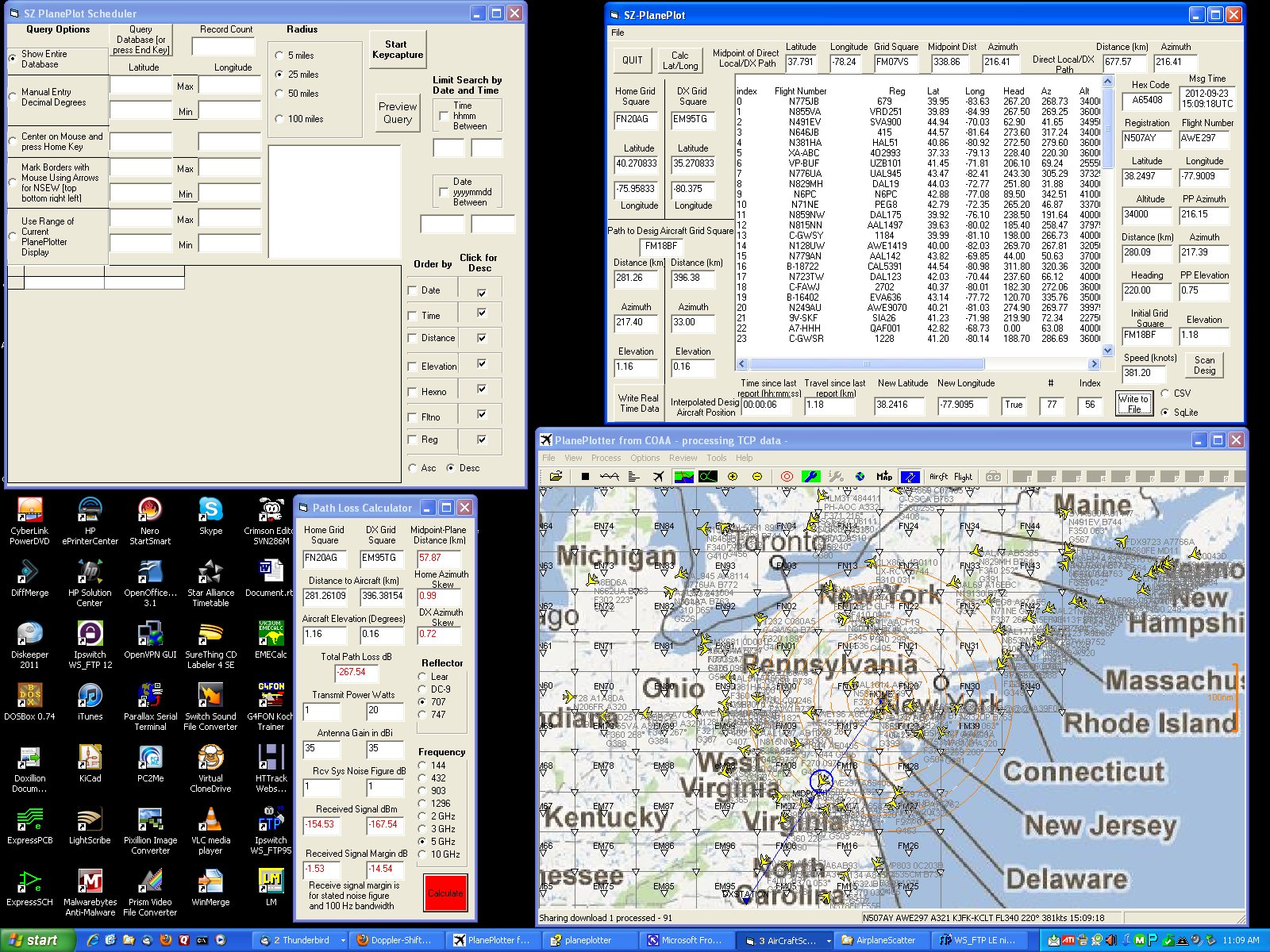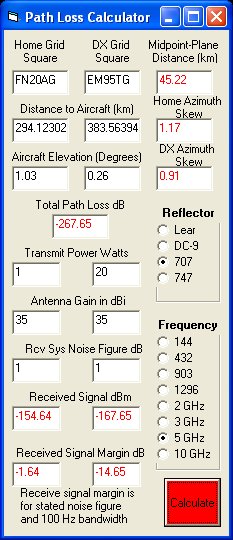
Aircraft Scatter Test with W4DEX

During the 10 GHz contest in September 2012, W4DEX was kind enough to send some 5 GHz signal my way during a time period when there was a jetliner running along the direct path between his station and mine. The distance between us is 589 km. We are lucky in that I live near Philadelphia, PA and he lives near Charlotte, NC and so there are every day a good number of direct flights flying along the direct path between us.
On the Linrad trace above you can see a faint signal that was present for approximately 30 seconds, just below the frequency represented by the tick mark for 90000. This signal was at approximately 5760.088 GHz, and I believe that it was signal with forward scatter enhancement from W4DEX. The plane was flying exactly along the path between us, so Doppler shift would have been minimized (See Figure 6 in the hyperlink). Depending on color rendition on your Display Adapter / Monitor the aircraft scatter trace in the illustration at the top of this page will either be EASY to see or NOT. I saw it easily on the ViewSonic monitor I was using when receiving the signal, and it is easy to see on my laptop, but NOT easy to see on my old DEC Trinitron monitor. So Your Mileage May Vary.
Below is a screen grab of PlanePlotter and the associated Visual Basic program as they appear with a plane flying a similar path to the one the plane was flying when the above Linrad trace was acquired. As noted above, these flights are frequent, so I was able to grab one with no pre-planning or scheduling needed, while typing up this page. You can right-click on it and then click "View Image" to enlarge it.


To the left is the Path Loss Calculator window for this plane. You see that the path between W3DEX and me is long enough that the plane needs to be near the midpoint of the direct path for it to be above the horizon for both stations. You can see that without forward scatter enhancement, the received signal margin is negative. But you add 20-30 dB to those numbers to take into account the effects of forward scatter enhancement.
I think aircraft scatter will be good for CW contacts out to 600-700 km [max distance will be determined by the altitude of plane], IF stations are running high enough ERP. Without forward scatter enhancement, it looks like you need a minimum of about 65 KW ERP [or 20 watts with 35 dBi antenna] on 5 G. I estimate that on 10 G you need a minimum of 200 KW ERP [or 20 watts with 40 dBi antenna] to make CW contact WITHOUT forward scatter enhancement. Note that the signal margin for these parameters was slightly negative when I took these screen grabs. When the plane is positioned differently along the path [with it closer to the horizon at one end], the received signal margin will be higher.
But WITH forward scatter enhancement, which will occur when the plane is along the direct path, you get additional 20-30 dB signal enhancement, and so the ERP can be reduced substantially. Unfortunately, the forward scatter enhancement comes and goes. An article that shows this is at:
http://www.vk3hz.net/vhf_column/June2011.pdf on page 7 figure 1.
You can see the signal intermittently rising from 0 to as much as 20 dB above the noise in that figure.
ISCAT-A, the new WSJT mode, should be ideal for doing aircraft scatter on the microwaves. The guys Down Under have used JT65C and ISCAT-A to successfully complete some very long distance contacts on 10 and 24 GHz. I will put more info here on that subject after the completion of MUD 2012, for they are presenting a very interesting talk there on this very subject, and I do not want to steal their thunder!
Copyright 1997-2012 COPYRIGHT Roger Rehr W3SZ. All Rights Reserved
Brought to you by the folks at W3SZ